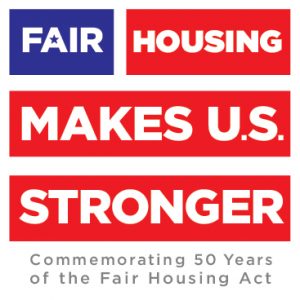Fair Housing: Promises of a Century
 For REALTORS®, the Fair Housing Act is one of our nation’s most significant laws guiding the real estate industry today. Usually we recognize it with Fair Housing Month, celebrated in April each year. 2018 is different, though, as we commemorate the fiftieth anniversary of this major milestone in our nation’s efforts to bring greater equal opportunities in the rights to private property and housing.
For REALTORS®, the Fair Housing Act is one of our nation’s most significant laws guiding the real estate industry today. Usually we recognize it with Fair Housing Month, celebrated in April each year. 2018 is different, though, as we commemorate the fiftieth anniversary of this major milestone in our nation’s efforts to bring greater equal opportunities in the rights to private property and housing.
As we commemorate this act, it is important to recognize that the way our country views property rights, and who has those rights, has been a struggle dating back at least since Europeans first came to North America.
When he signed the Fair Housing Act into law on April 11, 1968, President Lyndon B. Johnson noted that the bill would help fulfill “the promises of a century.” He referred to another law enacted just over one hundred years earlier, the Civil Rights Act of 1866, which declared “That all persons born in the United States […] are hereby declared to be citizens of the United States; and such citizens, of every race and color, without regard to any previous condition of slavery or involuntary servitude […] shall have the same right, in every State and Territory in the United States, to make and enforce contracts, to sue, be parties, and give evidence, to inherit, purchase, lease, sell, hold, and convey real and personal property….”
Despite the language and spirit of the law, the intervening century provided countless examples of laws and events that contradicted this early declaration of equality, including the right to buy, sell and own homes and other real property. The Civil Rights Act of 1866 itself specifically excluded Native Americans and immigrants from its definition of “all persons.” California, Oregon, Minnesota and other states enacted laws restricting or prohibiting immigrants from China and other Asian countries from owning land. Cities and towns across the country often used covenants as part of property deeds to restrict who could purchase and live in a particular place, effectively creating neighborhoods from which African Americans and other groups were banned.
A parade of court decisions and legislation sought to overturn many of these restrictions. In the early 1800’s, individual states began enacting laws granting women the right to own property. In 1948, the U.S. Supreme Court decided in the landmark case Shelley v. Kraemer that racially restrictive covenants on real estate could not be legally enforced. Less than a decade later, New York City became the first locality in the United States to ban discrimination in privately owned housing. In 1962 discrimination in federally funded housing was banned.
But it was the Fair Housing Act of 1968 that became the nation’s definitive law granting everyone equal access to housing,no matter their ethnicity, nationality, religion, handicap, or familial status. As President Johnson plainly explained: “It proclaims that fair housing for all — all human beings who live in this country — is now a part of the American way of life.”
For more Fair Housing information, resources, visit www.FairHousing.realtor.
Source: NATIONAL ASSOCIATION OF REALTORS

Leave a Reply